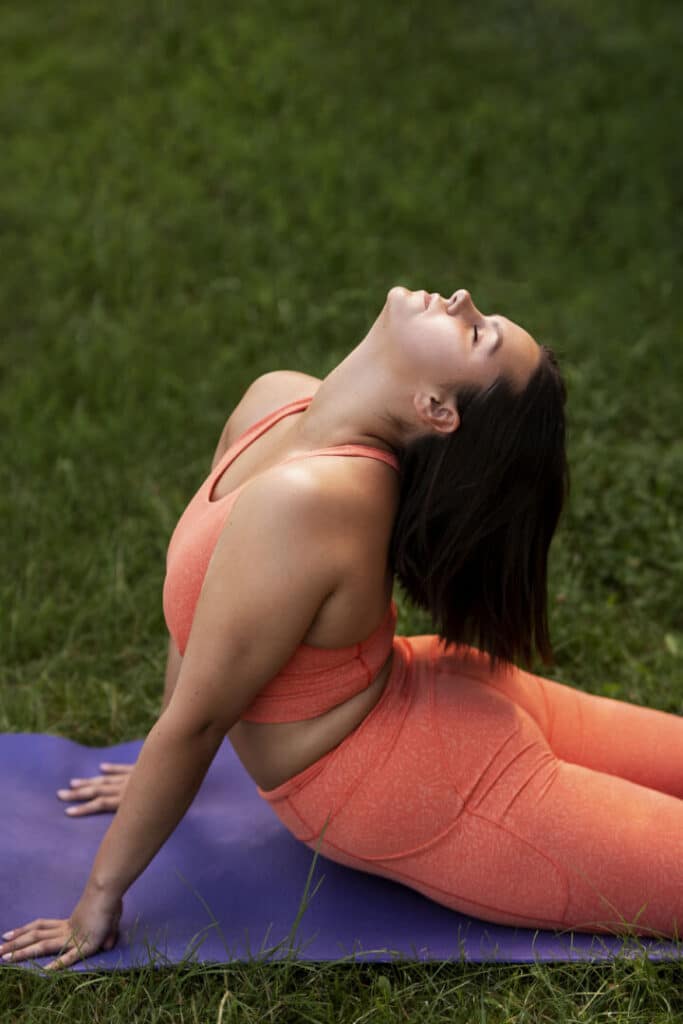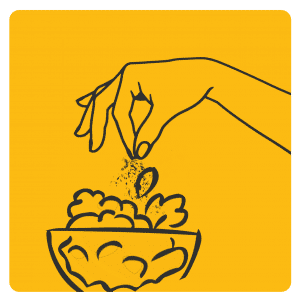
Yoga, Pranayama, and Mudras Based on Ayurvedic Body Type
Yoga has been practiced for thousands of years to promote physical and mental well-being. According to Ayurveda, an ancient Indian system of medicine, there are three different body types, or doshas, known as Vata, Pitta, and Kapha. Each dosha is made up of a unique combination of the five elements present in the universe: ether, air, fire, water, and earth. An imbalance in any of the doshas can lead to physical and mental health issues. So, it’s important to be aware of your ayurvedic body type because different types of yoga, pranayama, or mudras may be more beneficial for different doshas. Practicing yoga, pranayama, and mudras can help bring balance to the doshas, promoting overall health and well-being.
Yoga according to ayurvedic body type

Vata body types tend to be lean and vivacious, with a propensity for dryness and coldness. They often have trouble sleeping and can be prone to anxiety and fear. Ether and air makes up the vata dosha, that is associated with movement, creativity, and adaptability. An imbalance in vata can lead to anxiety, insomnia, and dryness of the skin and hair. Grounding and warming yoga poses like standing poses, twists, and forward bends should be a part of your routine if you want to balance vata. Additional support and stability can be added to poses by using props like blankets and bolsters. Poses such as child’s pose, cat-cow, and downward-facing dog are all good options for balancing vata.
Pitta body types frequently have a medium build, a strong digestive system, and a propensity for heat and acidity. They can be prone to anger and frustration and need to avoid poses that overheat the body. The Pitta dosha, which is composed of fire and water, is related to metabolism, digestion, and intelligence. An imbalance in pitta can lead to anger, acidity, and inflammation. Forward bends and twists, as well as other calming and cooling yoga poses, should be a part of your routine if you want to balance pitta. Poses that also help with emotional balance, like corpse pose and hip openers, are good options for balancing pitta.
Kapha body types are larger in build, have slow metabolisms, and have a propensity for being chilly and sluggish. They can be prone to weight gain and depression and need to avoid poses that are too passive. Kapha dosha is made up of water and earth and is associated with structure, stability, and love. An imbalance in kapha can lead to weight gain, depression, and sluggishness. Yoga poses that are invigorating and energizing, like backbends, inversions, and standing poses, should be a part of your routine if you want to balance kapha. Poses such as the plank, downward dog, and camel pose are good options for balancing kapha.
In general, it’s always a good idea to listen to your body and avoid any poses that cause pain or discomfort. Incorporate a variety of poses that suit your Ayurvedic body type. It can help you feel more balanced and energized. Yoga practice can help bring awareness to your body and mind and help you better understand your unique needs.
Pranayama according to each body type
Another crucial component of yoga practice that involves controlling the breath is pranayama. It is believed that the breath is closely linked to the body’s energy system, and the practice of pranayama can be used to bring balance to the doshas, which are the three distinct ayurvedic body types: vata, pitta, and kapha.
To balance vata, pranayama practices that are grounding and warming, such as Nadi Shodhana (Alternate Nostril Breathing), Bhramari (Bee Breath), and Udgeeth pranayama, are recommended. These practices help calm the mind and promote a sense of stability and grounding.
To balance pitta, pranayama practices that are cooling and calming, such as Sitali (cooling breath) and Sitkarii (hissing breath), are recommended. These practices help to cool down the body and promote a sense of calm and balance.
To balance kapha, pranayama practices that are invigorating and energizing, such as Bhastrika (bellows breath) and Kapalbhati (skull shining breath), are recommended. These practices help stimulate the body and promote a sense of energy and lightness.
It’s important to note that everyone is unique, and different types of pranayama may be more beneficial for different people. It is advised to begin with simple breathing exercises and work your way up to more complex techniques. It’s also important to remember to breathe deeply, comfortably, and with awareness while doing the practice, and never force your breath.
Additionally, pranayama practice should be done on an empty stomach and should be supervised by a trained yoga teacher or practitioner. It’s also crucial to pay attention to the breath’s repetition and duration, as instructed by the teacher or practitioner.
Pranayama exercises have a variety of advantages and have been practiced for thousands of years to improve both physical and mental health. By incorporating pranayama practices that are tailored to your unique needs, you can help bring balance to the doshas and promote overall health and well-being.
Mudras
The mudras are hand gestures that are used in yoga and meditation to control the body’s energy flow and influence its various systems. Mudras can be used to balance the doshas, or the three ayurvedic body type: vata, pitta, and kapha.
To balance vata, mudras such as Apana mudra, Prithvi mudra, and Shunya mudra can be used. These mudras help to ground the body and promote a sense of stability and balance.
To balance pitta, mudras like the Varuna mudra, Shankh mudra, and Cooling mudra are suggested. These mudras help to cool the body and promote a sense of calm and balance.
To balance kapha, mudras like the Agni mudra, Surya mudra, and Vayu mudra are advised. These mudras help stimulate the body and promote a sense of energy and lightness.
It is important to keep in mind that different individuals may have different characteristics and symptoms, so it’s always best to consult with a practitioner trained in Ayurveda or a yoga teacher to determine which mudras may be most appropriate for your individual needs.
Practicing mudras can be a simple yet powerful tool to help balance the doshas and promote overall health and well-being. It’s important to practice them regularly and with awareness. Mudras can be practiced in a seated position, while standing, or even while lying down. You can incorporate Mudras into a daily routine to enhance one’s physical and mental balance, along with yoga and pranayama.



